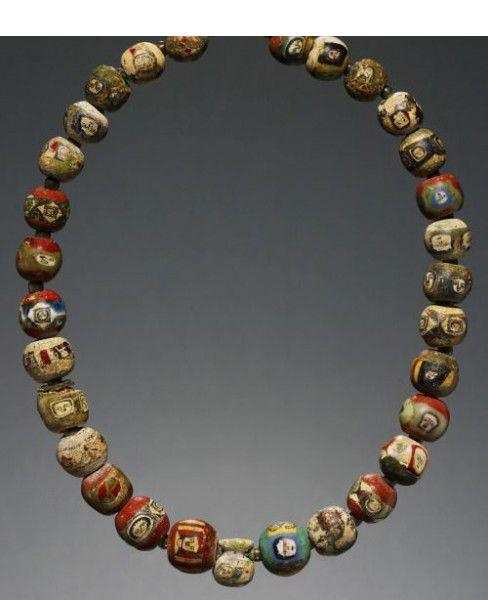
Beads and beads - decorations of the ancient world
We know that everything has long been in the past. Beads and beads, so fashionable today among homeworkers who call themselves jewelry designers, have a very long history, reaching even 5000 years BC. coffee in Sarbucks, they were very valuable several thousand years ago. What was their cost? What determines the cost of any real jewelry - effort and skill. The materials used to make it are primarily intended to enable the work to withstand the effects of time. And if they are rare and therefore expensive, so much the better. Do not put work into something that will get wet in the rain like paper.
Looking at these stone beads, one can easily see that they are perfectly round, the holes are in the center, and the outer surfaces are smooth. There is only one reasonable explanation - the beads must have been made in a rotational motion. They were sharpened on a rather simple, but still lathe, which we could meet in a very similar form today in India or Pakistan, and even closer - in Polish amber museums.
Neolithic beads and beads
Archaeologists may be taken aback by my statement. Well, if archaeologists knew different technologies better, their lives would be easier. Suffice it to recall that manufacturers of jewelry and ornaments have always used the most modern technologies, because they produced the most expensive pieces of applied art. Today, in the same way, 3D printing is most effectively used by jewelry companies. The rest talk about it only at conferences.
But back to beads. The manufacturing process was neither easy nor fast. First, an inner hole was drilled, often starting on both sides of the side. As you might guess, the process was the more difficult, the longer the bead. This suggests that the price increased with the length of the hole, long and thin beads should have been the most expensive. Then the shoulder was installed, placing it on the straight axis of the lathe, and the outer surface was machined. And flint tools were not used for this purpose, because they are too fragile.
The beads in the photographs date back to 5000-3000 BC. BC. Archaeologists say that turning with a primitive lathe like the one pictured above was invented in Egypt around 1500 BC. Shouldn't they reconsider?
Leave a Reply